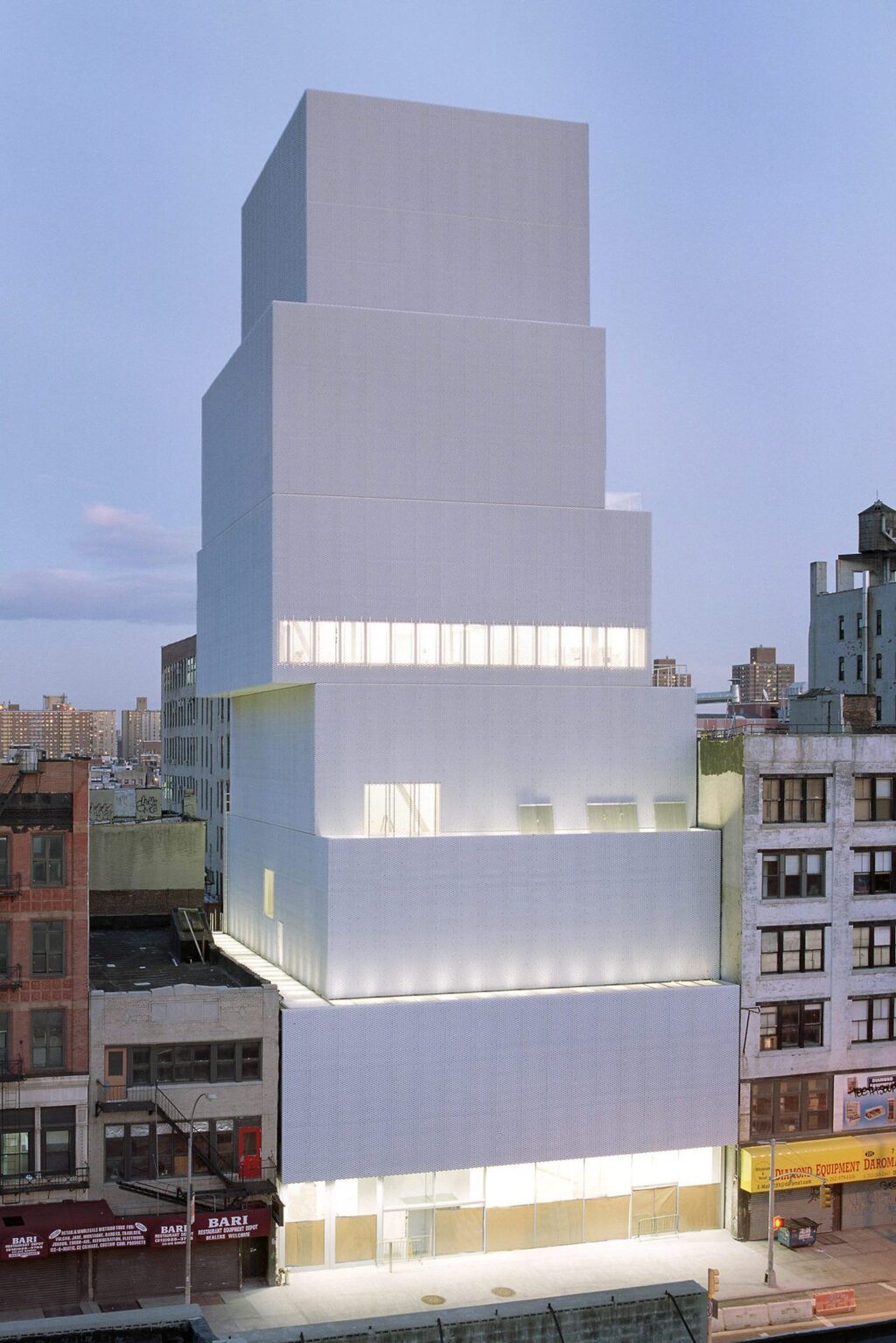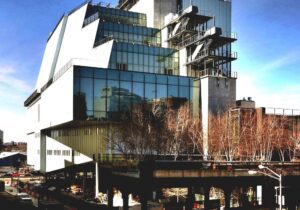
Museum of Modern Art, New York #MuseumFromHome
As with every aspect of life today, Covid-19 has drastically altered how the art world does business. Back in March, when federal and state governments forced art institutions to shut their doors to the public, it was surprising how quickly museums and galleries embraced the wholesale move to digitization. While internet-based creative production is nothing new to contemporary art, the recent torrent of “online experiences” has caused a distinctive shift in how audience engagement is managed. But instead of fostering “social belonging during social distancing,” as many art spaces claim to be offering, does this rush to data-dump everything into the virtual sphere actually expose the art system’s weaknesses—even redundancy—in meeting the challenges of these unprecedented circumstances? Rather than maintain its relevance, perhaps these rushed initiatives reveal just how out of touch the art world is—and has always been—with the real one.

As each week of quarantine passes, new virtual exhibitions, live streaming events, and AR gallery tours pop up, along with endless emails informing us of them. For instance, the Museum of Contemporary Art in Chicago launched “The Commons Online” which is a digital extension of the museum’s in-person community forum, where an array of experiences, from moderated studio visits, to ‘Virtual Slow Art Days’ are available. Similarly, The Guggenheim recently initiated programming for quarantined audiences, including art-making activities inspired by the museum’s collection.
It’s understandable that these institutions wish to adapt their missions and produce online content to continue serving their communities. It’s also important to acknowledge that many have to do so in order to maintain financial support—precarious at the best of times. However, in the midst of this rapid production of online content, is the art world simply amplifying the problems it has always grappled with—genuine, material connectivity, authentic engagement with dispossessed communities, and proving art’s value as a practical social tool? And if so, are they potentially missing opportunities to make a fundamental, and positive impact?
Many of these endeavors are couched in a romanticized approach to visiting museums, which is incongruous to the majority during this fraught isolation, and only really addresses those with the financial, emotional or class-based capacity to connect with art—white-collar employees, or the well off. But what about the millions of ‘essential workers’, including health care professionals and grocery store clerks, who risk exposure to the virus every day? Or the countless people experiencing unprecedented job losses—art workers included—who have been unable to file for unemployment benefits due to over-demand, and years of government cuts? Most harrowing of all, what of the thousands of family members, and friends of victims who have died contracting Coronavirus, which is disproportionately affecting Black and Latino populations? The daily realities of these constituencies may not be conducive to engaging with a project like #WhitneyScreens, a weekly screening of a video work recently brought into that museum’s collection. How does exploring the “boredom and ennui” of quarantine living by watching a three-hour film about reconfigured vintage pop-culture characters provide anything substantial to those not privileged enough to #MuseumFromHome? Capitalizing on Coronavirus as thematic inspiration so literally, highlights how superficial, and evasive these projects are—just another half-hearted attempt by museums to perform their predictable approach to “awareness.”
This glut of digital initiatives might not seem so facile if they weren’t also swaddled in the threadbare language of solidarity. Employing messaging like “healing”, “connection” and “togetherness,” across immense social, economic, and educational divides rings false when it didn’t exist prior to Coronavirus, and doesn’t differentiate social strata now. If it did, it was more often cursory, patronizing or uselessly generalized, than meaningful. The herd-like stance of “we’re all in this together!” shouldn’t regulate an institution’s ethos during a pandemic. It should be tailored to the varied needs of its audiences, and be at the center of its missions, always.
Such turgid responses to the pandemic can seem self-righteous, but at least they are well intentioned—most of the time. Until recently, The Walker Art Center’s homepage read: “We may be closed. But everything you need is right here. Explore our digital exhibitions, online talks and events, films, news articles, activities, and more. New Content Every Week!” It was a desultory promotional attempt to advertise the Walker’s increased digital presence, without offering anything substantial or specific to ameliorate the devastating conditions that Coronavirus has forced upon so many of us. The Walker was presumably made
aware of the inappropriateness of that hastily worded statement and the text has since been altered. Such disingenuous, pompous language reinforces the elitist mentality that has distanced museums from their most vulnerable communities for centuries, and it was a shocking conceit, even a dereliction of its responsibilities, for the Walker to have suggested that it has “everything you need.” It is to the institution’s credit that it amended the language, however much the original words betrayed its arrogance.

The prospect of a fully digitized art world—even if temporary—presents an opportunity to do things differently. Think of the organizations, and artists—Bassem Saad, BUFU, Eyebeam, for example—who have always worked in that format, who now have a chance to be instantly visible. Sadly, the mass hoarding of all art online has smothered those who specialize in it. It is dismaying to see how few institutions have rallied behind them, or called attention to those who have dedicated their careers to making thoughtful internet-specific production. The art system is racing to create online communities, without acknowledging those who made their efforts possible.
There is also a knock-on effect in how art criticism has responded. For instance, the New York Times is now covering ‘Gallery Shows to Explore at Home’ in their weekly roundups. However, the selections that made the NYT’s list during the first week of April were hardly the interesting forays into net art that they could have been. Instead, the list was composed of websites for galleries, and artists, who specialize in painting, drawing, sculpture and photography—mediums that favor in-person engagement. The writing lacks the intimacy, and experience required to do the work justice, so that they might as well have waited to do ordinary in-person reviews. Trying to critique an exhibition from a computer screen is so glaringly inadequate a practice, that we can’t expect much from the review that follows. No aspect of the art world—critical, curatorial, production—can continue operations-as-normal, or employ demeaning bandaids, without seeming tone-deaf, or obsolete, and so they need to adapt smartly, which is not necessarily quickly.
Museums and galleries are forging ahead, repeating the same cycles of exclusivity and detachment that have governed their operations and jargon for far too long. Rather than perpetuate a produce, produce, produce mentality, what if institutions stopped trying so hard to follow the latest trends, and instead used this time of quarantine to reflect on their relevance—in a Corona, and post-Corona era? Many institutions, including The Brooklyn Museum, Pace Gallery and The Frick Collection, have donated masks and gloves to hospitals in their communities. This is a positive, refreshing action, however little it has to do with art. Or, why not spend this time examining why it has taken so long to update gender binaries on bathroom signs; how to convert wall labels into braille; or how greener footprints can be achieved. During this devastating moment, the art world could step back and finally acknowledge the ways it has failed to forge the kind of togetherness it currently asserts to those it excludes regularly. Perhaps, and most provocatively of all, art institutions might consider closing altogether (or at least cease all public production) for the duration. Maybe, for some fields, the conditions we currently face are not meant to be adapted to so frantically, and incompletely, but reconsidered for the future. This could be the moment when we choose to challenge our own stifling norms, through radical non-participation in them.
The move online isn’t inherently defective, but the manner in which it is executed should be carefully considered. The blinkered approaches we are seeing now squander a unique opening to do things differently. The current situation, and its consequences, could be in place for a while yet. For the art world, that could be an opportunity lost, or gained.
Ryan Patrick


Wow, so insightful! Beautifully written Ryan. Thank you for this amazing look into our art world today.
Thank you, Ryan. There are not many as brave as you to challenge the arrogance of museums. Particularly in the US the museum is another name for collectors club. The degeneration is any sense of conflict of interest so no longer present. The tax system fuels conflict of interest.
Trump is interesting as he is also devoid of any ethics as whatever benefits he can hand out to the wealthy. It’s part of his programming. Ultimately, in our post-modern society the artist has to depend on the market or grants, as manufactured celebrity culture has overwhelmed and corrupted the art world mess we are in. The simple point I think is that artists will produce art even if not paid, they have no social status, which was the last resort the artist’s dignity.
The Pandemic will change many things, some Museum and art departments will collapse, but Artists will continue to produce. The sad fact is that museums have to rely on middle-class culture. Middle-class culture is what it is, not in sync with individual creative or dependent thinking. It has more than a tendency towards fashion, as it is not sure or confident of its Tase.
As far as I am concerned the great tragedy is the death or near-death of criticism. In theory, the critic was free from comprise, but most media has followed into the museum into the lackluster of current mediocrity. The decline of print media is hand in hand with the decline of museums.
Somehow reform is needed. Mrs Bucket and Perwinkel Blue control the purse string along with Satchi.
With the news from UNESCO of 1 in 8 museums worldwide possibly not reopening after the pandemic, we must think how this will effect other entities down the line, galleries, art schools, artists, frame shops, art transport companies, and also the cultural loss it inevitably will entail. I had no idea that there were 85,000 museums in the world,though of course, not all are art museums.
Not only have we had enough of virtual exhibitions, we have had enough of virtual everything – we want real life and no more social disengagement. Enough is enough!
Hi Charlie, Where does one start to look for real life? I think you mean the art world is lackluster? Correct me if I am mistaken.
Over decades of living in Toronto’s art neighbourhood, I have stopped going to opening nights out of disappointment at the beggarly offerings. In answer to your article,looks like we see almost all art online anyway.